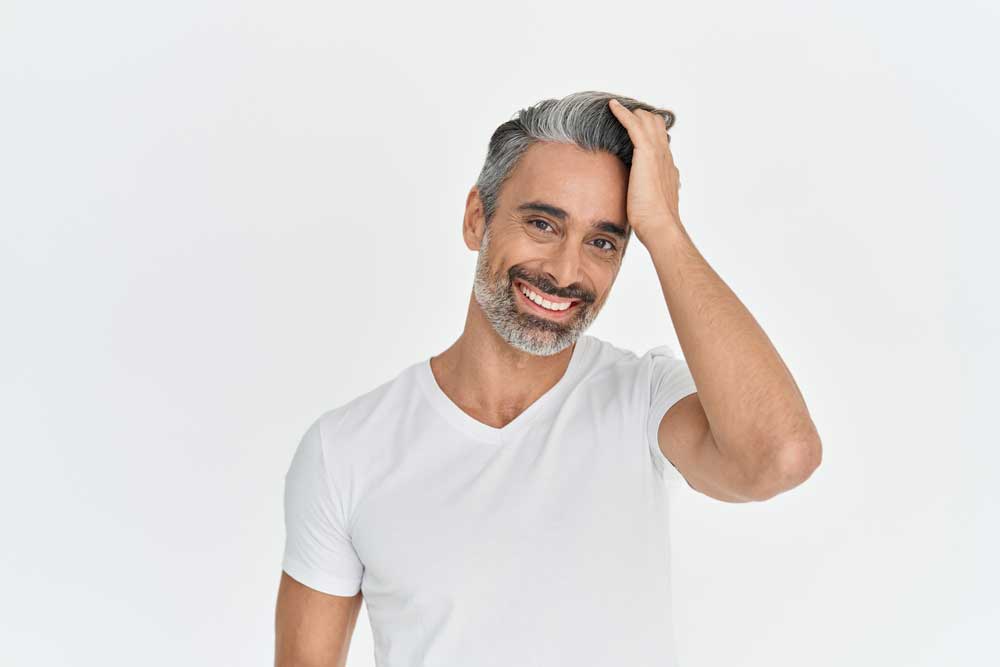Bald spots, clinically known as alopecia areata, are primarily characterized by small bald spots on the scalp. Typically, each of these spots is about the size of a quarter or even smaller. Treatments are available for most people to facilitate hair regrowth on bald spots or increase hair growth in areas with thinning hair. However, it is critical to opt for proven hair growth methods and steer clear of unreliable and deceptive treatment options, which can often worsen the situation. This article discusses the treatments that can help to regrow hair on bald spots.
Causes of a Bald Spot
Even though the most common causes of bald spots are age-related, several other reasons can cause bald spots on the scalp. These include the following:
1. Hair products and styling
Certain hairstyles can also lead to bald spots. For example, pulling back your hair tightly regularly can lead to a bald spot. Additionally, certain shampoos and other hair-care products can also be problematic for your hair health.
2. Androgenetic alopecia
This is a hereditary hair loss condition and is the most common cause of developing bald spots on your scalp. This condition is also called male pattern baldness and is mainly characterized by receding hair on the top of the forehead, crown, and near the temples.
3. Alopecia areata
It’s an autoimmune condition in which your body’s immune system attacks your hair follicles by mistake. This causes hair to fall out in small patches on the head. In some cases, this condition can also cause hair loss from eyelashes, eyebrows, and other body parts.
4. Hormonal imbalances
Hormonal imbalances can also lead to hair loss and bald spots. For example, women with PCOS can experience hair loss.
5. Stress
Another major cause for developing bald spots on your scalp is high-stress levels. So, make sure your stress levels are well managed to avoid bald spots on your scalp.
6. Cancer treatment
Chemotherapy and radiation therapy associated with cancer treatments can often lead to hair loss. However, hair can be expected to regrow within a month or so once the treatment is ended.
Natural Treatments for Hair Loss
Most natural treatments for hair loss typically focus on improving the blood circulation in the scalp or improving hair follicles’ health. Here are some natural products you can use which can help to improve hair growth.
1. Rosemary oil
It has anti-inflammatory properties which help improve circulation. You can either use a natural shampoo with rosemary oil as one of its ingredients or rub a small quantity of rosemary oil on your bald spot.
2. Peppermint oil
This oil is an effective topical treatment to boost your hair growth. You can also use shampoo containing peppermint oil.
3. Aloe Vera
Aloe Vera has anti-inflammatory properties and various minerals, enzymes, and other healthy ingredients to help regrow hair and protect the scalp.
4. Massage
A vigorous scalp massage is also one of the simplest ways to help improve blood circulation in the scalp. It will also stretch hair follicle cells to achieve thicker hair growth.
Over-The-Counter Treatments for Bald Spots
Many OTC products claim to slow down hair loss. Some examples include:
1. Minoxidil
It’s available as foam, liquid, or shampoo. However, sometimes it may cause side effects like skin irritation. Also, note that if minoxidil successfully restores your hair growth, you will have to use it indefinitely to sustain its impact.
2. Collagen-based products
Collagen is a protein associated with hair growth and is found to help reduce the thinning of hair due to androgenetic alopecia.
3. Vitamin supplements
Specific vitamins and minerals like vitamin A, vitamin C, vitamin D, vitamin E, B-vitamins like biotin, a critical component of several hair growth treatments, and iron and zinc are also associated with hair growth. You can consider taking supplements that have these vitamins and minerals after consulting your doctor.
Medical Treatment for Bald Spots
The most common prescription medications for hair loss are Finasteride, Corticosteroids, Anthralin, and Methotrexate. However, ensure you take these medications after consulting your doctor.
Surgical Treatment for Hair Loss
Note that surgery should be considered when all other options fail and cannot achieve the desired results. There are mainly two types of hair transplant approaches:
- FUT hair transplant: Your doctor takes a skin strip along with hair follicles from a donor site in this method. Follicles are then removed from the skin and transplanted to a bald area.
- FUE hair transplant: In this method, your doctor extracts distinct hair follicles from the donor site and transplants them into small incisions in the recipient site in your scalp.
Coping with Hair Loss
A bald spot on your scalp can be an unpleasant experience for you, especially if you are in your 20’s or 30’s. The first thing you should do to cope with your situation is to accept it early on and take steps to treat it if that is what you desire to do. Another option is to work with your stylist to style your hair in the best possible manner. To cope emotionally with your hair loss, open up about your condition to your family and loved ones. They can help you deal with the situation positively and provide the necessary emotional support.
Get medical help and discuss options like medication, hair restoration treatments, and hair transplant surgery with a reputed hair transplant doctor. Additionally, having a healthy diet, a regular exercise regime, and a healthy lifestyle ensures your hair health.
If you are looking for the best hair transplant doctors in NJ, our New Jersey Hair Restoration Center medical team can help you. You can give us a call or make an appointment with our experts today. Our services include the most reliable and effective hair restoration treatments, including FUE hair transplant, FUT hair transplant, PRP therapy medication, and more.


